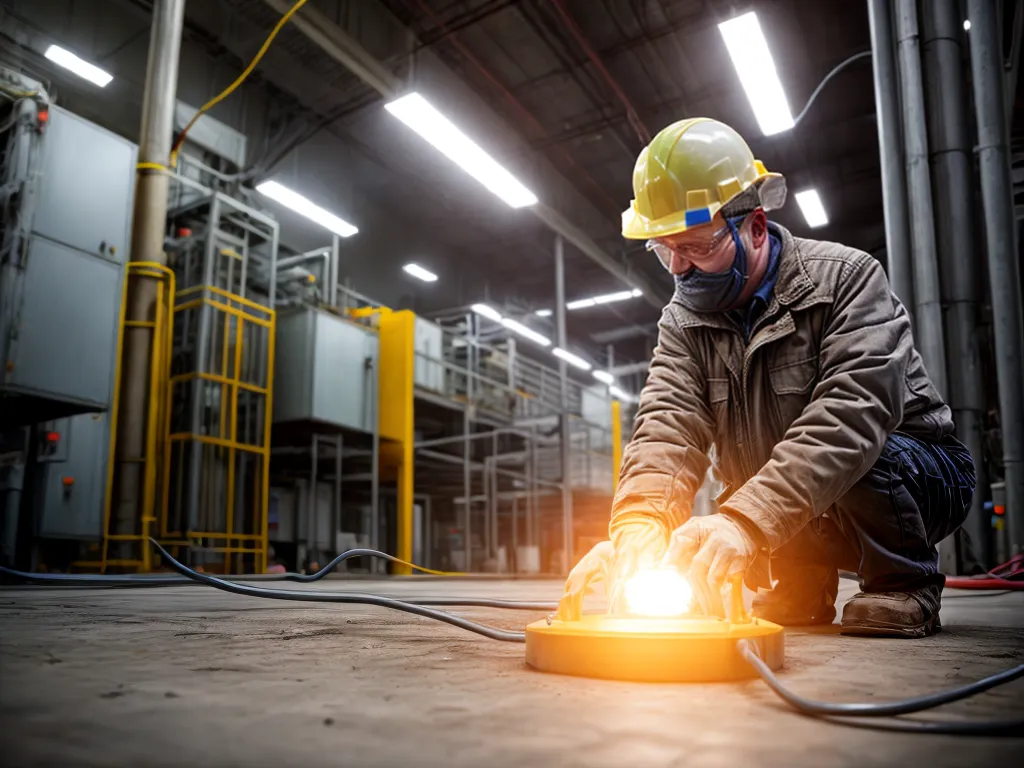
Industrial workplaces contain many potential electrical hazards that can cause injuries and fatalities if not properly controlled. Older, legacy facilities in particular often lack updated electrical systems and safety features compared to newer plants. Improving electrical safety should be a top priority for any company operating an aging industrial facility.
Assessing the Electrical Risks
The first step is thoroughly evaluating the electrical risks throughout the facility. Here are some key areas to inspect:
-
Power distribution equipment - Check for damaged or outdated switchgear, transformers, boxes, panels, and other distribution components that may pose shock or arc flash hazards.
-
Wiring - Inspect cabling for damaged insulation and splices that may expose conductors. Old wiring that has degraded over decades of use should be replaced.
-
Equipment - Legacy motors, heaters, pumps, and other equipment often lack modern safety features and can become electrical hazards if not routinely maintained.
-
Electrical rooms - Disorganized electrical rooms with exposed live parts and missing covers or shields are unsafe. Combustible storage or clutter increases arc flash and fire risks.
-
Energized work - Identify all instances where employees may be exposed to live parts during troubleshooting, maintenance, or repair work. Special precautions are needed.
Thoroughly document all electrical safety gaps that are found. Risk assessments by qualified electrical engineers may be warranted for older facilities.
Improving Electrical Safety Policies
Legacy industrial sites often lack formal electrical safety programs with defined responsibilities, procedures, and controls. Key policy improvements include:
-
Lockout/tagout - Ensure comprehensive hazardous energy control procedures for de-energizing and isolating equipment are in place and followed for maintenance and repairs.
-
Workspace safety - Establish safe work zone boundaries and procedures where energized parts cannot be avoided such as control rooms. Restrict access to authorized personnel only.
-
Personal protective equipment (PPE) - Specify and provide appropriate PPE for electrical work such as rubber insulating gloves, sleeves, blankets, and arc flash suits and face shields. Train workers on proper use.
-
Planning - Require detailed job planning and hazard analysis for electrical tasks to identify all risks and mitigation steps. Planning must be documented.
-
Authorization - Energized electrical work should only be permitted after authorization by designated managers. Verification of Planning and PPE should be required.
Upgrading Electrical Infrastructure
Ultimately, legacy electrical components and systems need to be retired, replaced, or refurbished to incorporate modern safeguards. Key upgrades include:
-
Arc flash mitigation - Install current limiting fuses, arc resistant switchgear, arc flash detection systems, and bus differential relays to reduce arc flash risks.
-
Insulation - Replace old insulated cables and motor windings prone to deterioration and make sure adequate spacing exists between live parts.
-
Guarding - Install physical guards and screens to prevent accidental contact with live terminals, bus bars, and connections.
-
Grounding - Inspect and refurbish grounding electrodes and connections for equipment and structures. Ground fault circuit interrupters (GFCIs) should also be installed where lacking.
-
Circuit protection - Update overload and short circuit protection devices such as fuses and circuit breakers. Add arc fault detection capability.
-
Separation - Improve physical separation between high voltage equipment and work areas. Separate electrical rooms into low and high voltage areas.
-
Signage - Ensure adequate safety signage including arc flash hazard warnings and voltage indicators.
While upgrades take time, interim containment measures such as installing polycarbonate barriers or access restrictions can also mitigate hazards.
Training Electrical Workers
Worker training is essential for reinforcing electrical safety policies and procedures. Training topics should include:
- Electrical theory and the properties of electricity
- Electrical hazards such as shock, electrocution, arc flash, and fire
- Hazard identification and risk assessment
- Safe work practices around electrical equipment
- Use of special precaution tools, PPE, and instruments
- Lockout/tagout procedures
- First aid response for electric shock incidents
Hands-on exercises are highly recommended to improve skills in a safe environment. Ensure qualified electricians receive additional technical training on the new equipment and systems.
Conclusion
Improving safety around aging electrical systems requires a multi-pronged strategy of hazard assessment, policy updates, infrastructure upgrades, and worker training. However, the substantial benefits of modernizing electrical safety make the effort and investment well worth it for the protection of industrial workforces. Staying proactive with upgrades, maintenance, and training is key for sustainability.